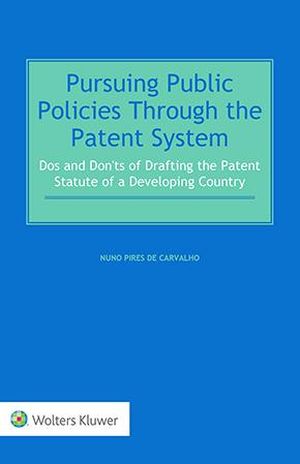
Pursuing Public Policies Through the Patent System is a deeply informative study, which analyzes more than fifty national statutes of developing countries and more than ten international agreements. One of the world’s most renowned intellectual property law scholars thoroughly describes the domestic objectives a developing country’s patent statute should pursue while still complying with international treaties. There is a general consensus among intellectual property law experts – and among global organizations, such as the World Trade Organization and the World Intellectual Property Organization – that patent statutes for developing countries should recognize such countries’ distinctive public policies.
The framework developed by Pires de Carvalho depicts how, because inventors are granted effective security under the TRIPS Agreement to seek opportunities to commercially exploit their inventions in any country, the patent lawmaker of a developing country is under pressure to ensure that the law should reduce the burden of sharing the costs of invention to the minimum possible, and should provide for a mechanism of granting patents that is efficient but simple and cost-effective and does not impose a heavy burden on the country’s public administration yet still provide legal security to inventors.
What’s in this book:
In developing his framework, the author intensively explores the following crucial approaches:
Each chapter includes a useful dos and don’ts section indicating best practices, attending to the chapter’s particular focus.
How this will help you:
The nonpareil summary and analysis contained in this book will assist lawmakers of developing countries in pursuing the public policies of their choice through national patent statutes, explain the adequate meaning and scope of a large number of patent-related statutory provisions found in the laws of developing countries, and guide IP practitioners and academics on the interpretation and construction of the most controversial provisions in patent statutes.